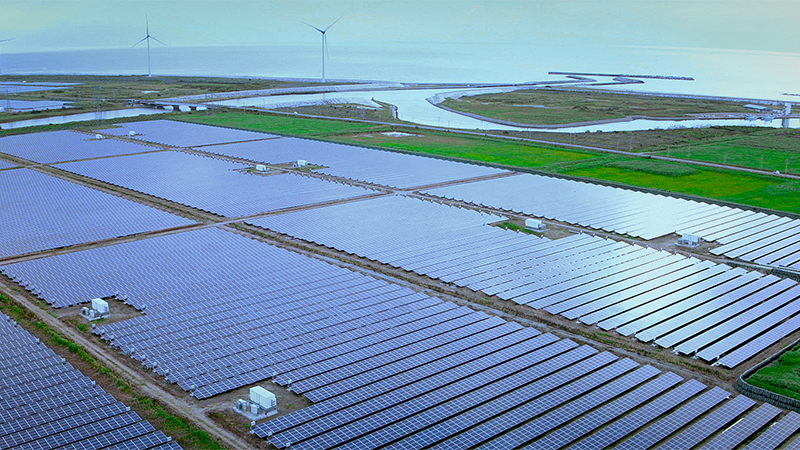Apr. 07, 2021
Memorandum of Understanding on Ground-Source Heat Utilization Project Concluded with Otaru City
On December 21, 2020, Sumitomo Corporation signed a memorandum of understanding with Otaru City, Hokkaido in Japan, regarding a survey to investigate the feasibility of a project for constructing a next-generation smart heat supply network mainly utilizing ground-source heat. With the cooperation of Otaru City, we will be examining the possibility of utilizing ground-source heat, which is a locally produced and locally consumed form of renewable energy.
Required models of renewable and distributed energy
Global warming has become an urgent social issue, and there is a global need to spread the implementation of decarbonization and renewable energy. As Japan frequently encounters earthquakes, typhoons and other disasters, it is an important challenge for the country to make the shift from conventional centralized energy models that revolve around large power plants to models that combine distributed energy. Given this state of affairs, Japan must expedite the implementation of next-generation forms of energy such as hydrogen, in addition to renewable energies such as solar and wind power.
Ground-source heat set to disrupt the norm of heating and cooling
Ground-source heat, a form of renewable energy, refers to low-temperature thermal energy that is available in shallow ground. Unlike geothermal heat, which taps heat derived from magma at depths of about 1,000 to 3,000 meters below ground to generate electric energy, etc., ground-source heat involves the extraction and utilization of low-temperature heat from solar heat that has accumulated near the ground surface. Underground temperatures at depths of 10 to 20 meters remain constant at about 15°C throughout the year. This ground-source heat can be tapped with the use of heat pump systems, air circulation, heat conduction, water circulation, and heat pipes, etc., to provide efficient space cooling and heating, as well as hot water supply.
It has been reported that nearly half of our primary energy (*1) is ultimately consumed as heat energy such as for space heating and cooling, and hot water supply. Furthermore, much of the heat energy used at businesses and in homes is produced in buildings using electricity and fossil fuels. By promoting the build-out of heat supply networks for individual districts and regional utilization of heat from renewable energy sources based on the utilization of ground-source heat, we can expect to accelerate to reduce fossil fuel consumption.
The use of ground-source heat began to spread in Northern Europe and North America in the 1980s. Given its advantages, such as power saving and CO2 emissions reduction, it is now spreading in about 60 countries and regions, including China, the United States, and Sweden. In Japan, although there has been a gradual rise in the number of facilities that utilize ground-source heat, one example being the introduction of a heat pump system in the Tokyo Skytree district which opened in 2012, it is known that compared to other countries, public awareness of ground-source heat remains low and there have been relatively few examples of actual implementation.
The city planning vision we share with Otaru City
The aim of this project is to build Japan's first 5th Generation District Heat Supply Network (*2) in Otaru City through the use of ground-source heat, and to provide efficient heat supply with the use of AI and big data, supervised by Prof. Nagano, Hokkaido University.
The average winter temperature in Otaru is approximately 0°C, and large amounts of fossil fuels are used for space heating. The utilization of ground-source heat will not only lead to decarbonization, but will also help revitalize the local economy through the local production of energy for local consumption. Mayor Hazama of Otaru City commented at a press conference on February 1, "I have high expectations that once commercialization is achieved, this will contribute to the development of Otaru City." Sumitomo Corporation is committed to cooperate with Otaru City to investigate the feasibility of commercialization with our sights set on constructing a ground-source heat supply network in the city. In addition, we will also work to raise awareness of the great potential of ground-source heat use for urban energy network through this project.
- Primary energy: An energy obtained from nature that it is converted into electricity, gas, or other forms. This is a general term for energy obtained from fossil fuels such as coal, oil, and natural gas, as well as from renewable energy such as solar and wind power.
- 5th Generation District Heat Supply Network: A new type of DHC (district cooling and heating system), which consists of water loops combined with multiple borehole fields as the heat source/heat sink of heat pump units installed in the individual building. Here, the annual temperature variation of the water loop is maintained between 5 ˚C to 25 ˚C due to mainly the seasonal thermal energy storage effect assisted by the air heat source using cooling towers for the hot summer and the solar thermal energy for the heating season. Thus, extremely high APF (Annual Performance Factor; Annual total amount of heat supply to the buildings divided by annual total amount of primary energy consumption to operate the DHC system) will be expected. As a result, this can contribute creating sustainable zero-carbon societies.



